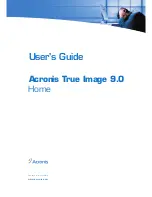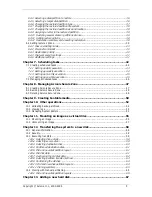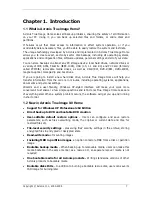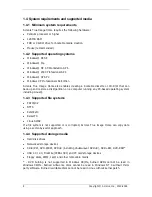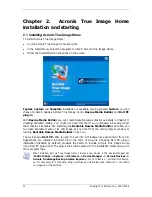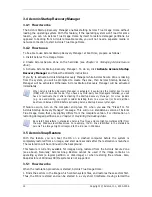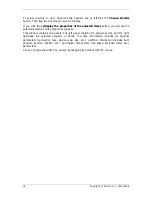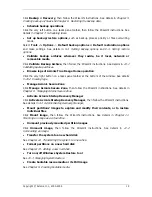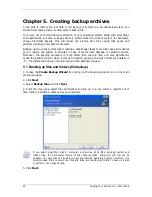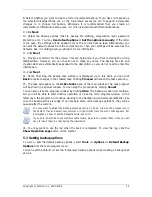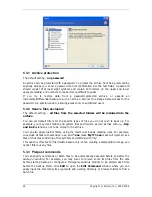
A standalone full backup may be an optimal solution if you often roll back the system to the
initial state (like in a gaming club or Internet café, to undo changes made by the guests). In
this case, you need not re-create the initial full image, so the backup time is not crucial, and
the restore time will be minimal.
Alternatively, if you are interested in saving only the last data state to be able to restore it in
case of system failure, consider the differential backup. It is particularly effective if your data
changes tend to be little as compared to the full data volume.
The same is true for incremental backup. In addition, it is most useful when you need
frequent backups and possibility to roll back to any of stored states. Having created a full
backup once, if you then create an incremental backup each day of a month, you will get the
same result as if you created full backups every day. However, the cost in time and disk
space (or removable media usage) will be as little as one tenth as much.
It is important to note that the above arguments are nothing but examples for your
information. Feel free to make up your own backup policy in accordance with your specific
tasks and conditions. Acronis True Image Home is flexible enough to meet any real-life
demands.
An incremental or differential backup created after a disk is defragmented might be
considerably larger than usual. This is because the defragmentation program changes file
locations on disk and the backups reflect these changes. Therefore, it is recommended that
you re-create a full backup after disk defragmentation.
3.3 Acronis Secure Zone
The Acronis Secure Zone is a special hidden partition for storing archives on the computer
system itself. For archive security purposes, ordinary applications cannot access it. In the
Acronis True Image Home Wizards’ windows the zone is listed along with all partitions
available for storing archives. Acronis Secure Zone is necessary for using Acronis Startup
Recovery Manager and Acronis Snap Restore features (see below).
Acronis Secure Zone is always available for archive creation as long as there is space for the
backup file. If there is not enough space, older archives will be deleted to create space.
Acronis True Image Home uses the following scheme to clean up Acronis Secure Zone:
•
If there is not enough free space in the zone to create a backup, the program deletes the
oldest full backup with all subsequent incremental/differential backups.
•
If there is only one full backup (with subsequent incremental/differential backups) left
and a full backup is in progress, then the old full backup and incremental/differential
backups are deleted.
•
Otherwise, (only one full backup left, and an incremental/differential backup is in
progress) you will get a message about space error. In that case you will have to either
re-create the full backup or increase Acronis Secure Zone.
Thus, you can back up data automatically on a schedule (see
Chapter 7. Scheduling tasks
),
and not worry about zone overflow issues. However, if you keep long chains of incremental
backups, it will be a good practice to periodically check the zone free space, indicated on the
second page of the
Manage Acronis Secure Zone
wizard.
For information on how to create, resize or delete Acronis Secure Zone using this wizard, see
in
Chapter 8 Managing Acronis Secure Zone
.
.
Copyright © Acronis, Inc., 2000-2006 13

